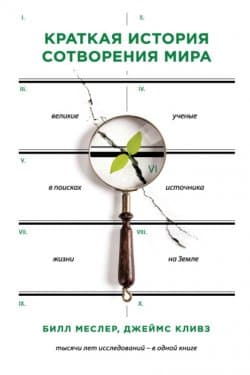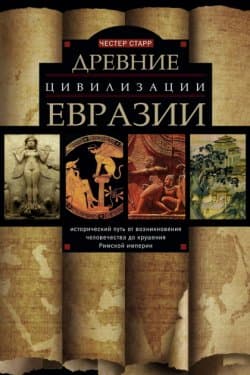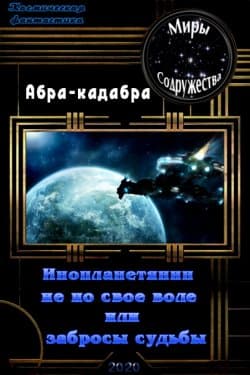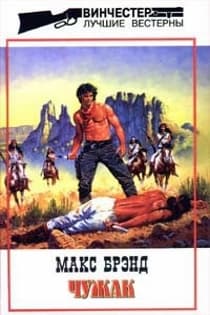Sapiens. Краткая история человечества - Юваль Ной Харари (2011)
-
Год:2011
-
Название:Sapiens. Краткая история человечества
-
Автор:
-
Жанр:
-
Язык:Русский
-
Страниц:231
-
Рейтинг:
-
Ваша оценка:
Homo sapiens сто тысяч лет назад являлся одним из шести видов человека, которые существовали на планете. Этот вид был ничем не примечательным животным, играющим в экосистеме небольшую роль, примерно такую как гориллы, светлячки, медузы. В хозяина мира вид Homo sapiens, около семидесяти тысяч лет назад, превратило загадочное изменение когнитивных способностей. Каким образом человеку разумному удалось покорить мир? Какова судьба других человеческих видов? В какой период и по какой причине возникли государства, религии, деньги? Как появлялись, рушились империи? По какой причине большинство народов ставили мужчин выше женщин? Как капитализм и наука стали в современной эпохе господствующими вероучениями? Люди становились с течением времени счастливее? Каково будущее человечества?
Юваль Харари рассказывает, как исторический ход влиял на общество и действительность вокруг него. Его произведение показывает связь между событиями, произошедшими в прошлом, и проблемами современности, что непременно заставляет читателя пересмотреть все устоявшиеся представления об окружающем мире.
Sapiens. Краткая история человечества - Юваль Ной Харари читать онлайн бесплатно полную версию книги
9 Fekri A. Hassan, Demographic Archaeology (New York: Academic Press, 1981), 196–199; Lewis Robert Binford, Constructing Frames of Reference: An Analytical Method for Archaeological Theory Building Using Hunter Gatherer and Environmental Data Sets (Berkeley: University of California Press, 2001), 143.
10 Paul Seabright, The Company of Strangers: A Natural History of Economic Life (Princeton: Princeton University Press, 2004), 261 n. 2; M. Henneberg and M. Steyn, ‘Trends in Cranial Capacity and Cranial Index in Subsaharan Africa During the Holocene’, American Journal of Human Biology 5:4 (1993): 473–479.
11 Nicholas G. Blurton Jones et al., ‘Antiquity of Postreproductive Life: Are There Modern Impact on Hunter-Gatherer Postreproductive Life Spans?’, American Journal of Human Biology 14 (2002), 184–205.
12 Kim Hill and A. Magdalena Hurtado, Ache Life History: The Ecology and Demography of a Foraging People (New York: Aldine de Gruyter, 1996), 164,236.
13 Hill and Hurtado, Ache Life History, 78.
14 Vincenzo Formicola and Alexandra P. Buzhilova, ‘Double Child Burial from Sunghir (Russia): Pathology and Inferences for Upper Paleolithic Funerary Practices’, American Journal of Physical Anthropology 124:3 (2004), 189–198; Giacomo Giacobini, ‘Richness and Diversity of Burial Rituals in the Upper Paleolithic’, Diogenes 54:2 (2007), 19–39.
151. J. N. Thorpe, ‘Anthropology, Archaeology, and the Origin of Warfare’, World Archaology 35:1 (2003), 145–165; Raymond C. Kelly, Warless Societies and the Origin of War (Ann Arbor: University of Michigan Press, 2000); Azar Gat, War in Human Civilization (Oxford: Oxford University Press, 2006); Lawrence H. Keeley, War before Civilization: The Myth of the Peaceful Savage (Oxford: Oxford University Press, 1996); Slavomil Vend, ‘Stone Age Warfare’, in Ancient Warfare: Archaeological Perspectives, ed. John Carman and Anthony Harding (Stroud: Sutton Publishing, 1999), 57–73.
16 James F. O’Connel and Jim Allen, ‘Pre-LGM Sahul (Pleistocene Australia – New Guinea) and the Archeology of Early Modern Humans’, in Rethinking the Human Revolution: New Behavioural and Biological Perspectives on the Origin and Dispersal of Modern Humans, ed. Paul Mellars, Ofer Bar-Yosef, Katie Boyle (Cambridge: McDonald Institute for Archaeological Research, 2007), 395–410; James F. O’Connel and Jim Allen, ‘When Did Humans First Arrived in Grater Australia and Why Is It Important to Know?’, Evolutionary Anthropology, 6:4 (1998), 132–146; James F. O’Connel and Jim Allen, ‘Dating the Colonization of Sahul (Pleistocene Australia – New Guinea): A Review of Recent Research’, Journal of Radiological Science 31:6 (2004), 835–853; Jon M. Erlandson, ‘Anatomically Modern Humans, Maritime Voyaging, and the Pleistocene Colonization of the Americas’, in The first Americans: the Pleistocene Colonization of the New World, ed. Nina G. Jablonski (San Francisco: University of California Press, 2002), 59–60, 63–64; Jon M. Erlandson and Torben C. Rick, Archeology Meets Marine Ecology: The Antiquity of Maritime Cultures and Human Impacts on Marine Fisheries and Ecosystems’, Annual Review of Marine Science 2 (2010), 231–251; Atholl Anderson, ‘Slow Boats from China: Issues in the Prehistory of Indo-China Seafaring’, Modern Quaternary Research in Southeast Asia, 16 (2000), 13–50; Robert G. Bednarik, ‘Maritime Navigation in the Lower and Middle Paleolithic’, Earth and Planetary Sciences 328 (1999), 559–560; Robert G. Bednarik, ‘Seafaring in the Pleistocene’, Cambridge Archaeological Journal 13:1 (2003), 41–66.
 Библия. Синодальный перевод РБО
Библия. Синодальный перевод РБО
 Краткая история сотворения мира. Великие ученые в поисках источника жизни на Земле Билл Меслер, Джеймс Кливз
Краткая история сотворения мира. Великие ученые в поисках источника жизни на Земле Билл Меслер, Джеймс Кливз
 Древние цивилизации Евразии. Исторический путь от возникновения человечества до крушения Римской империи Честер Старр
Древние цивилизации Евразии. Исторический путь от возникновения человечества до крушения Римской империи Честер Старр
 Онтогенез. От клетки до человека Джейми Дейвис
Онтогенез. От клетки до человека Джейми Дейвис
 Сквозь зеркало языка. Почему на других языках мир выглядит иначе Гай Дойчер
Сквозь зеркало языка. Почему на других языках мир выглядит иначе Гай Дойчер
 Как начинались великие религии. История духовной культуры человечества Джозеф Гаер
Как начинались великие религии. История духовной культуры человечества Джозеф Гаер

 Пир теней
Пир теней  Князь во все времена
Князь во все времена  Когда порвется нить
Когда порвется нить  Пока я здесь
Пока я здесь 



















